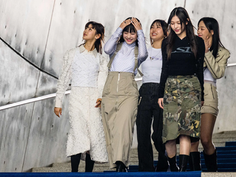Russia’s Military Struggles and the Growing NATO Threat
- Iruni Kalupahana
- Oct 3, 2024
- 3 min read
Iruni Kalupahana JadeTimes Staff
I. Kalupahana is a Jadetimes news reporter covering Russia-Ukraine war

Russia’s Military in the Ukraine War
Since the start of the invasion of Ukraine in 2022, the Russian military has grown very fast, mobilizing hundreds of thousands into its ranks. But such rapid growth has not translated into improvements in quality. Training of new recruits is hasty, and frontline units continue to suffer from equipment shortages.
Following its fiascos, especially earlier in 2022, Moscow was forced to adapt. On the defense, the country is in a better position since poorly trained troops were being used for defensive positions, while strengthening elite units like the marine infantry, airborne VDV, and Spetsnaz special forces.
The better weapons, longer training, and stronger leadership were given to elite units, and Russia's shift from using brigades to divisions allows the country to take on heavy losses more efficiently.
The Role of Tanks in the Conflict
Despite being written off prior to the war as obsolete, tanks have played a crucial role in battles for territory. Ukraine and Russia have heavily utilized or relied on the support of tank forces for ground operations. Modern threats in this war, however, including that from drones, anti-tank missiles, and mines, have brought huge losses in tanks on both sides. Russia has lost more than 8,000 tanks, according to Ukrainian estimates.
While Moscow increased tank production, it was largely refurbishing older models, with its newer model T-90s rolling out very slowly. Because of that, many soldiers under Russian command have to operate tanks that are 40-50 years old. This reliance upon outdated equipment negates any possibility for Russia to maintain technological parity with the forces of NATO, where modern tank production along with air support is far superior.

Russia’s Technological Advances
In the context of a shortage of equipped saws in general, Russia has managed to make quite good improvements in tacking modern technologies into military actions. Among the topical developments, one could mention a far flung application of drones, starting from small units intended for reconnaissance purposes and bigger strike drones. These drones enable Russia to trace Ukraine's troop movements more effectively and provide for much more accurate and heavy artillery strikes.
Meanwhile, the electronic warfare units of Russia have also evolved from the beginnings of the conflict and have gained great ground in the realm of jamming Ukrainian communications and disrupting Ukrainian drones. Such capabilities have conspicuously improved the situational awareness of the Russian ground forces, hence limiting Ukraine's ability to coordinate such attacks. In the air, however, Russia has been quite challenged, with its air force struggling against Ukrainian and NATO provided air defense systems that limit Russia's air superiority.
NATO’s Response and Military Strength
The war has slammed thedoor shut on that era of atrophy, NATO is reinvigorated, and military readiness has duly been heightened across Europe and North America. Defense spending in NATO nations primarily from Eastern Europe has increased, arms manufacturing in the United States and Europe has reverted to high gear to keep up with not only Ukrainian demands but also possible future conflicts.
In contrast to the Russian forces, NATO troops are better trained and with more advanced equipment, with long histories of multi nation exercises ironing out the kinks among the member states' command structures. Conventional warfighting against Russia would be dominated by western air forces trained on precision air campaigns with an ability to disable opponents' infrastructure and communications.
The hardware of the NATO army, from fifth generation fighter aircraft to the most modern missile defense systems, is too big a challenge for the predominantly outdated military structure of Russia.

The Future of Russia’s Military
If the war in Ukraine were to freeze or reach a peace settlement, for example, Russia would seize such an opportunity to reconstruct and restructure its military. The country has already provided an indication that it will maintain high military spending, with the defense budget reaching 6 percent of its overall economy. Thus, Russia might replace losses in its tank forces and strengthen its elite units, refining its military doctrine.
But the real danger is that it will fall into the very same trap of overconfidence, whereby a belief by Putin, and many Western military analysts, that prior to the invasion of Ukraine the Russian military had undergone successful modernization and thus would be able to quickly defeat Ukraine led to the prolonged conflict that followed. A similar miscalculation in the future might well lead Russia to underappreciate NATO's collective strength, leading to a far more calamitous conflict.



























Comments